Computing
Vision
By building on their knowledge of computer science and how digital systems work, children are equipped to use information technology to create programs, systems and a range of content. Our computing curriculum also ensures that children become digitally literate – able to use, express themselves and develop their ideas through information and communication technology – at a level suitable for the future workplace and as active participants in a digital world.
Progression in computing will be assessed throughout each key stage using the National Curriculum statements - through the children’s ability to know, apply and understand the matters, skills and processes specified in the relevant programme of study. We assess the children through:
- Observing children at work during computing sessions.
- Questioning the children in relation to their study in order to assess their understanding and comprehension.
- Assessment/marking the work produced by the children and discussion of their next steps.
Leaders gather knowledge of how the curriculum is being taught through work scrutiny, lesson observations and pupil interviews where children can articulate and demonstrate the skills they have been taught.
Coverage
We understand that computers and other IT can help pupils make accelerated progress. We support pupils to develop their skills such as researching, typing, editing and art skills. Then we use those skills in cross-curricular work. Our computing curriculum follows the Teach Computing Scheme which enables progression across the school. Every class has a timetabled opportunity to use the computers and Chrome books. We encourage staff to incorporate technology throughout the wider curriculum and use these skills to research and present a range of work in a variety of ways. Each class has access to interactive whiteboards and teaching is delivered using this technology.
Year 1
Term 1
e-Safety
Computing systems and networks -Technology around us
Creating Media -Digital painting
Term 2
Programming A - Moving a robot
Data and Information - Grouping data
Term 3
Creating Media - Digital writing
Programming B - Animations
Year 2
Term 1
e-Safety
Computing systems and networks - Information Technology around us
Creating Media - Digital photography
Term 2
Programming A - Robot algorithms
Data and Information - Pictograms
Term 3
Creating Media - Making music
Programming B- Introductions to quizzes
Year 3
Term 1
e-Safety
Computing systems and networks – Connecting computers
Creating Media – Desktop publishing
Term 2
Programming A – Sequence in music
Data and Information - Branching databases
Term 3
Creating Media – Stop frame animation
Programming B – Events and actions
Year 4
Term 1
e-Safety
Computing systems and networks -The internet
Creating Media – audio editing
Term 2
Programming A – Repetition in shapes
Data and Information - Data logging
Term 3
Creating Media – Photo editing
Programming B – Repetition in shapes
Year 5
Term 1
e-Safety
Computing systems and networks – Sharing Information
Creating Media – Video editing
Term 2
Programming A – Selection in physical computing
Data and Information – Flat file databases
Term 3
Creating Media – Vector drawing
Programming B – Selection in quizzes
Year 6
Term 1
e-Safety
Computing systems and networks - Communication
Creating Media – Web page creation
Term 2
Programming A – Variables in games
Data and Information – Introduction to spreadsheets
Term 3
Creating Media - 3D modelling
Programming B - Sensing
Evidence
The materials used to plan and teach computing ensure that children know how to use technology safely, respectfully and responsibly at age related expectations and results in the desired impact of children acquiring knowledge, understanding and an ability to apply their computing learning.
Children are assessed in line with curriculum requirements, through teacher judgements, and outcomes are recorded on our online assessment system at the end of each term. Children will leave our school with a love of computing learning and have the confidence to implement these skills in everyday situations - ready for future challenges.
